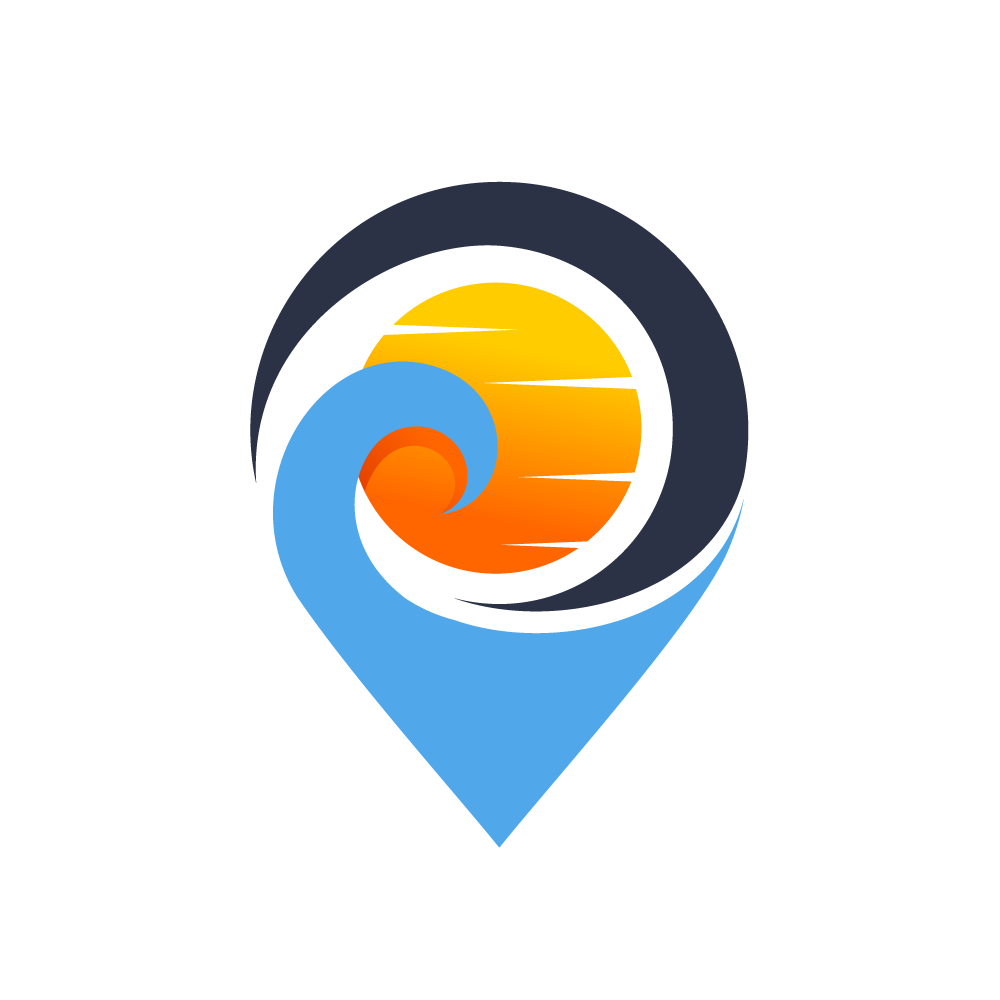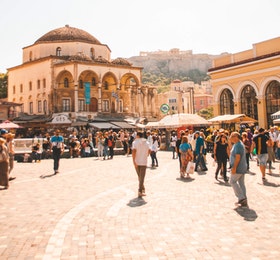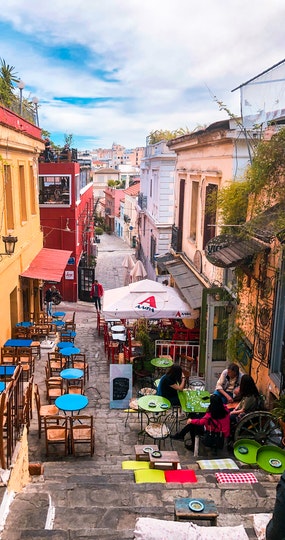Heraklion
per person
Heraklion is the capital and largest city of Crete. It is the most commercial city of the island and it is located in the middle of the coast. Furthermore, Heraklion is the scientific center of the island as it holds the Foundation for Research and Technology. Its geopolitical position is very strategic as the city is located between three continents, connecting many different cultures. At the entrance of the old port of Heraklion tourists can see the fortress of Heraklion, “Koules” (Greek: Κούλες) or Castello a Mare (“Fort on the Sea” in Italian). It was built in the beginning of the 16th century, by the Republic of Venice and is still in good condition today.
Overview
Area
244.6 km2
Altitude
33 m
Population
173,993
Currency used
EURO (€)
-
IncludedHeraklion
-
Not IncludedTour OperatorsAccountingLegal AdvicesBrokersPersonal Guide
1
Live & Work
Live in Heraklion
Places to Live
Archana
Archanas is a beautiful town of Heraklion. Built at an altitude of 380m and surrounded by mountains it has a lot to offer the visitor. The neighborhoods consist of well-maintained houses painted in bold colors giving the visitor that beautiful retro vibe. It should be said that Archanas has received a number of European awards considering its traditional image.
Matala
The village of Matala is part of the community of Pitsidia within the municipal unit of Tympaki. Malata was, and still is a fishing village. In the 1960s, the caves by the beach of Matala were occupied as living spaces by hippies, who were then ejected from the village by the military and the church. Nowadays, the beach of Matala is well organized with plenty of sunbeds and some cafeterias. It is an ideal location for anyone who wants to find peace and quiet, visit archeological places and get to know the cretan traditions.
Arolithos
Arolithos is a complex built to resemble a traditional cretan village. It consists of picturesque streets and houses and it also has a workshop for painting very old trees. Arolithos was the stone concavity in which water was collected. Therefore, the name of this village was not chosen by accident.
Mirtia
Mirtia is a village of the Municipality of Archanos-Asterousiοn, located 15 km from Heraklion and is known for its wine production for the past 7 centuries. Moreover, Mirtia played a significant role during the Byzantine Period as well as the Turkish Occupation, because of its inhabitants’ actions. It should be noted that the father of Nikos Kazantzakis, the great Greek writer, was born in Mirtia. The central square of the village is also named after Nikos Kazantzakis.
Hersonissos
Hersonissos is the most modernized part of Heraklion as most of its infrastructure is newly built. It is a very popular tourist location with a number of organized beaches and shops, many modern restaurants and bars as well as hotels. The interesting part of Hersonissos is that its new port is built over an ancient Roman port. It should be noted that some of the ruins of the old port can be seen underwater.
Malia
In Malia anyone can live the two opposites. You can experience calm and quiet family vacation as well as intense entertainment and parties. One side of Malia has narrow streets, small traditional houses with bougainvilleas in their gardens and traditional taverns with Greek live music. The other side of Malia is full of clubs and bars that are visited by young tourists willing to party until the morning.
Book a Tour
Work in Heraklion
Internet
INALAN (internet provider)
The idea of fiber optics that will bring you the ultimate fast internet connection, a speed you can't get any other way these days. Immediately available to you through INALAN a few days after your request.
COSMOTE (internet provider)
The fiber optic network is the latest technology for fast Internet access. It enables data to be transmitted at the speed of light through cables with very thin glass filaments, the optical fiber. This results in amazing new speeds that in the future could reach up to 1Gbps.
VODAFONE (internet provider)
Next Generation Network (NGN). The main fiber to the home (FTTH) technology we have implemented is the Gigabit Passive Optical Network (GPON). This shares a system capacity of 2.5 Gbps downstream and 1.25 Gbps upstream to typically 32 to 64 customers. This provides our customers with the ability to reach the maximum speeds of 1 Gbps outlined in our vision for the Gigabit Society.
WIND (internet provider)
If you also believe that working and studying from home is important and should be achieved with fast speeds, then WIND Fiber is here for you. You will be able to communicate with your colleagues and participate in video conferences without any delay, even when simultaneous video calls are taking place.
Fiber optics are not affected by external factors, resulting in a stable and reliable Internet connection at 100 Mbps. They can't stop you anywhere!
TOUR LOCATION
Sports & Nature
Sports and Activities
Camping
There are many campsites in Crete in which any tourist can spend the night or just pay a visit with their van. Agia Galini in South Crete and Matala are known for such an experience. A tourist can enjoy alternative holidays in nature or on the beach with a view of the beautiful blue sea. These places offer beaches with sand and shallow water, making them ideal for playing games with children. Furthermore, the sea can give the impression of a huge natural pool when there is no wind.
Hiking
The mountains of Ida, better known as Psiloritis, are located in the center of Crete and cover a large part of Heraklion and Rethymnon Prefectures. Psiloritis, which was considered by the ancient Minoans as a sacred mountain where many myths took place, has an altitude of 2456 meters and Timios Stavros is the highest peak of all of Crete. The ascent to Timios Stavros can either start from the South or the North or even the Nida plateau. Starting points of the South are Kamares, Fourfouras or Platanias whereas the starting point of the North is “The Strata of Psiloritis”, which is an excellent path starting from the refuge at Lakka Mygerou (1,670m).
Scuba diving
Firstly and most importantly, you will practice navigation and buoyancy. Secondly, you will practice deep diving and then you will choose three specialty dives. When all the above is completed you are ready for scuba diving! Such diving sites can be found in many places in Heraklion some of which are the Saint George Cave in Hersonissos, Cape Trypiti in Lygaria Beach, Skaros Reef in Fodele.
Parasailing
Parasailing is the best way to enjoy the view of the rocky mountains and the blue sea of Crete. It should be noted that parasailing is not an extreme sport and no experience is needed. In contrast, it is a very safe and relaxing way to view the island from the sky. Anyone who’s looking for fun activities is capable of doing parasailing. The adventure starts from Ammoudara Beach, which is 7km from the center of Heraklion.
Climbing
Visiting Mount Lentas, you will discover the Pedestrian Area. The climbing spots there are exquisite and very close to the beach. They are considered easy and doable for anyone with little to no experience of climbing. Climbing in Heraklion is an adventure worth living.
Beaches nearby
Matala
Mythology states that Matala is where Zeus arrived and transformed into a bull. He then stole Europa carrying her on his back. Matala beach is a wide long beach with sand. The sea is crystal clear and can be very calm. However, the sea gets very rough because of the big waves that form due to the intense wind. Those few days the sea is not very safe to swim in.
Agiofarangos
Agiofarago beach is located around 80km south of Heraklion city. The beach is amazing, with small pebbles and crystal clear, cold waters, which usually are very calm. On the beach a beautiful arch is formed, beneath which you can swim. The depth of the water increases sharply. Above the beach there are some cliffs formed, where sometimes you can see an ascetic praying on the rocks.
Aspes
The name of this beach, Aspes, means “landslides” in English. There are many cliffs around the beach that form shade for the visitors during the day. However, visitors should not sit very close to the base of the cliffs as landslides are quite possible. On the beach of Aspes, you will see many caves in which the water enters. This forms small black pebbles, which is a rare phenomenon in Crete. The scenery is amazing considering the green-blue color of the sea and the small black pebbles.
Vathy
Vathi beach is the ideal destination for anyone looking for the ultimate relaxation. The beach is surrounded by long cliffs, and the circular bight of the bay conceals it from the open sea, making Vathy a natural hideout. It is said that pirates used it as their anchorage. Due to the circular bay, the beach mostly has calm waters.
Agia Pelagia
Agia Pelagia is a seaside fishing village built in an amphitheater way. The name of the village came from the homonymous church in the Monastery of Sebbathians. Agia Pelagia is located in the middle of Crete, making it easily accessible for any tourist. There are many beaches, some of which are Agia Pelagia beach (the busiest), Lygaria Bay, Mononaftis bay, Kladissos bay, Made beach, Psaromoura beach, Fylakes beach, and Ammoudi. Furthermore, near Agia Pelagia, there are many sights one can visit, like the Minoan Palace of Knossos and the Archaeological Museum of Heraklion.
History & Tradition
Must Places to Visit
Fortress Koules
As you enter the port of Heraklion, you can see the dominant fortress named Koules or as the Italians used to call it Rocca a Mare or Castello a Mare. A fortress built by Venetians during the 16th century. Before the fortress was built, there were Byzantine towers protecting the city. The first documents that confirm those towers are dated at the early years of the 14th century.
The Archaeological Museum
Heraklion has one of the most important museums in Europe, called "the Archaeological Museum of Heraklion." It was built in 1933-1937 according to the designs of P. Karantinos. Where the current building of the museum is located, there was the Venetian monastery of Saint Franciskos, which was destroyed because of an earthquake in 1856. The goals of the museum are to accept, preserve, research, study and exhibit Cretan objects, which have been collected from the earliest prehistoric times to the late Roman period.
The Minoan palace
Knossos is a very important city of Crete. Knossos’ history holds from the Neolithic years until the 5th century. In Knossos, the main attraction to visit is the Minoan Palace, which is built on the hill of Kefala. It has easy access to the sea as well as to the rest of Crete. The Minoan Palace was discovered by Minos Kalokairinos. The excavations began in 1900 A.D. by Sir Arthur Evans-Arthur Evans (1851-1941), an English archaeologist.
The Historical Museum
The Historical Museum of Crete was first opened in 1953 by the Society of Cretan Historical Studies. It showcases the history of Crete from the first Christian centuries to the modern era. Furthermore, it holds many well-known paintings of El Greco such as The Baptism of Christ (1569), the View of Mount Sinai and the Monastery (1570). Those are the paintings of the famous artist held in Crete. Furthermore, the museum has a unique section in which the Nikos Kazantzakis Collection is showcased. It includes some of the famous Cretan author’s personal items and manuscripts.
Loggia
During the Venetian rule, Loggia was where the nobles would gather in order to discuss numerous economic, political, and commercial issues that concerned the city. Moreover, the nobles would spend their free time there. It was considered a combination of a chamber and a club. Loggia that is preserved until today was built in 1626-1628 under the command of Francis Morosini. He also built the Morosini Fountain. This is the 4th and last Loggia built during the Venetian Period.
Tradition
Bougatsa
For the past few years, every Cretan household has been welcoming the new year with a “bougatsa”, a sweet pastry delicacy, in order to make the upcoming year sweeter. This custom was first started from the sweet shop “The Liontaria” created by Apostolis Salkintzis. He came to Heraklion from Smyrna in 1922 and built his sweet shop at the Liontaria Square of Heraklion (Plateia Liontarion). It is said that the custom originated from the gambling clubs in the heart of the city of Heraklion. The winners would treat the losers to a “bougatsa” at Apostolis’ shop to cheer them up.
The Mask
In 1958, Odysseas Messaritakis invented a carnival costume that in a number of years became the characteristic carnival appearance of his village. This traditional unique mask is one of the most impressive masks in Greece and it is known widely in the Mediterranean area. It is made out of the root of an immortal being, decorated with different kinds of horns and objects. It was used to terrify children and mothers would take advantage of it in order to make them drink their milk before bed, as it is used to in Greek households.




